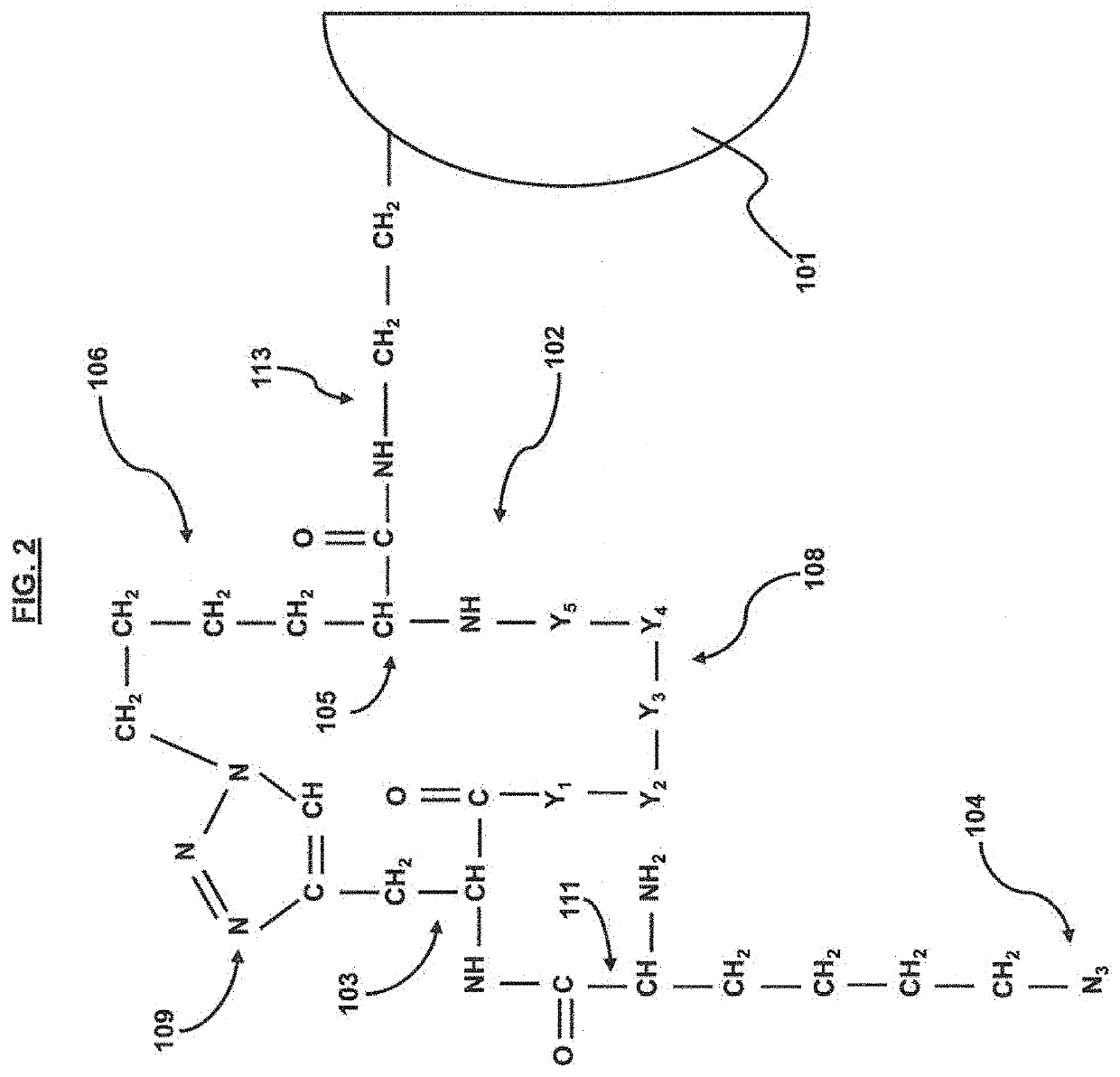Methods for developing virus protein specific capture agents, capture agents, and methods of using the capture agents
a technology of virus protein and capture agent, which is applied in the field of synthetic capture agent development, can solve the problems of not showing azide-functionalized cyclic peptide library compounds or the application of such libraries, and no approved antivirals or vaccines available to the general population, so as to improve the affinity and selectivity of the target protein
- Summary
- Abstract
- Description
- Claims
- Application Information
AI Technical Summary
Benefits of technology
Problems solved by technology
Method used
Image
Examples
examples
[0052]A screening strategy for the CHIKV E2 protein was performed according to the general method outlined in FIG. 5. In short, CHIKV E2 protein was functionalized with an alkyne moiety and then incubated with at least a portion of an azide terminated cyclic peptide library (architecture shown in FIGS. 1 and 2). An In situ ‘click’ reaction occurs between the protein and only specific cyclic peptides at the multiple substituted sites on the protein surface. The down-selected cyclic peptide library members (˜200 beads) were then incubated with 1% human serum to determine which members were the most selective for CHIKV E2, resulting in 4 sequences (WIYYI (SEQ ID NO: 1), YWHWS (SEQ ID NO: 2), IYLRY (SEQ ID NO: 3), FWQIL (SEQ ID NO: 4)). The detailed methodology is as follows.
[0053]Library Synthesis:
[0054]Library synthesis was achieved using similar techniques as described in the article by Das et al. (Das et al., “A General Synthetic Approach for Designing Epitope Targeted Macrocyclic P...
PUM
| Property | Measurement | Unit |
|---|---|---|
| structure | aaaaa | aaaaa |
| covalent | aaaaa | aaaaa |
| affinity | aaaaa | aaaaa |
Abstract
Description
Claims
Application Information
 Login to View More
Login to View More - R&D
- Intellectual Property
- Life Sciences
- Materials
- Tech Scout
- Unparalleled Data Quality
- Higher Quality Content
- 60% Fewer Hallucinations
Browse by: Latest US Patents, China's latest patents, Technical Efficacy Thesaurus, Application Domain, Technology Topic, Popular Technical Reports.
© 2025 PatSnap. All rights reserved.Legal|Privacy policy|Modern Slavery Act Transparency Statement|Sitemap|About US| Contact US: help@patsnap.com



